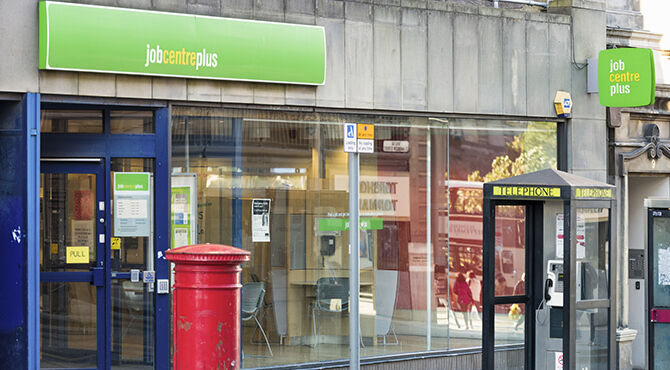Record number of Britons in work as jobless tally tumbles
Official data released by the Office for National Statistics (ONS) has revealed that unemployment in the UK has fallen to its lowest figure in a decade, with currently 1.58 million people out of work.

Highest employment rate on record
The number in work was 315,000 higher than in January last year – representing an employment rate of 74.6 per cent, equalling the highest on record – while the number out of work was the lowest in a decade. The ONS said the number of claimants receiving benefits fell by 11,300 in February to 734,700, the lowest since May 1975.The only disappointing aspect of the data was the fact average earnings were recorded as increasing by 2.2 per cent in the year to January, down by 0.4 per cent on the annual rate logged in December.David Freeman, senior statistician at the ONS, said, “With the unemployment rate last lower in summer 1975 and the employment rate still at a record high, the labour market remains robust. But smaller wage increases and higher inflation mean the growth in real earnings has slowed sharply in recent months.”Unemployment at its lowest in 12 years
Employment Minister Damian Hinds commented, “I'm delighted by another set of record-breaking figures showing more people in work than ever before and unemployment falling to its lowest in 12 years.“Employment is up, wages are up and there are more people working full-time. This is good news for hard-working families across the UK as we continue to build a country that works for everyone.“But we have more to do, which is why we're pressing ahead with our welfare reforms to ensure that it always pays to be in work.”The figures also showed that a record 4.8 million Britons were now self-employed, representing 15.1 per cent of the nation's workforce. Those classed as economically inactive, including people caring for a relative, on long-term sick leave or who had given up looking for work, fell by 34,000 to 8.8 million.Some less positive underlying trends
Commenting on the figures, Ian Brinkley, acting chief economist at the CIPD, the professional body for HR and people development, said, “These are positive figures overall, reflecting a resilient labour market. The further fall in unemployment for young people is encouraging, but there are some less positive underlying trends.“Firstly, the number of migrants in work continues to edge down, especially those coming into the UK from the A8 countries, suggesting that continuing uncertainty about the future status of EU citizens in the UK is already having an impact.“Secondly, average earnings growth on regular pay has slowed, suggesting that real wages are falling as inflation increases. This could be a sign that some employers are seeking to offset the impact of the introduction of the Apprenticeship Levy and increases to the National Living Wage next month through lower basic pay awards. With less chance of a pay rise and money not going as far when paying for the weekly shop and bills, UK workers will need to watch their spending carefully.“Thirdly, it looks as though employment growth is becoming increasingly polarised, with only full-time permanent employment and self-employment showing any net growth. This could be due to squeezed wages forcing workers to look for more hours, or the impact of a slowdown in hiring by sectors traditionally offering part-time roles, like retail and the public sector. If this trend continues, it may reduce employment options for some people in the future.”Slowest real pay growth for two years
Rachel Smith, CBI Principal Labour Market Economist, also warned,“Real pay growth is now at the slowest rate for two years, underlining the importance of increasing productivity, which remains the only sustainable route to higher wages, and therefore living standards.“We need to unlock the productive potential of all UK nations and regions by pursuing a meaningful, regionally-focussed industrial strategy, with clear priorities and targets, that delivers opportunity and prosperity for all.”Samuel Tombs, chief UK economist at Pantheon Macroeconomics, said, “The combination of meagre wage growth despite very low unemployment supports the (Bank of England's) Monetary Policy Committee's view that enough slack remains in the labour market to warrant keeping rates on hold during the imminent period of high inflation.“Indeed, this report hints that the equilibrium unemployment rate could even be below the 4.5 per cent rate suggested by the MPC in February.”Related news:
- UK employers fear EU talent pool is being drained
- 'No excuses for businesses' in driving diversity agenda
- 'Confidence returning' to oil and gas recruitment: study
John Hawksworth, chief economist at PwC, added, “With consumer price inflation already up to 1.8 per cent in January and set to rise further over the coming months, real earnings growth could be back in negative territory by the end of 2017. This is likely to dampen consumer spending, which could eventually feed through into slower jobs growth as well.”Scott Bowman, UK economist at Capital Economics, said, “The latest UK labour market data suggest that average earnings growth is not picking up alongside inflation, resulting in a squeeze on real wage growth.”However, he said he expected that a shortage of workers would push up pay in the coming months.For related news and features, visit our Human Resources section.Access hundreds of global services and suppliers in our Online Directory
 Get access to our free Global Mobility Toolkit
Get access to our free Global Mobility Toolkit 
©2025 Re:locate magazine, published by Profile Locations, Spray Hill, Hastings Road, Lamberhurst, Kent TN3 8JB. All rights reserved. This publication (or any part thereof) may not be reproduced in any form without the prior written permission of Profile Locations. Profile Locations accepts no liability for the accuracy of the contents or any opinions expressed herein.






































